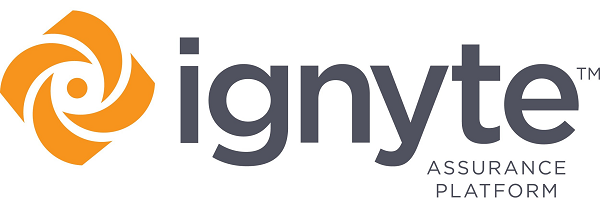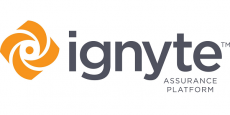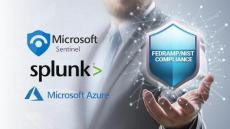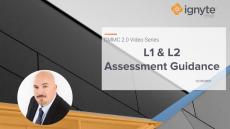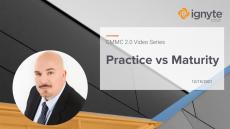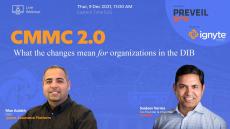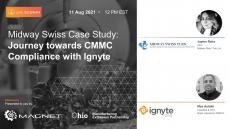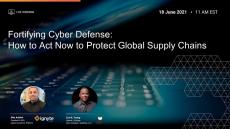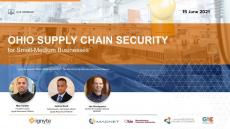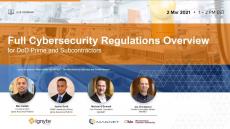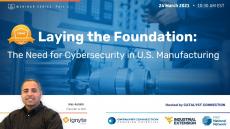|
By Max Aulakh
The stereotype of the government as a slow-moving behemoth is not ill-fitting, but when it makes adjustments and changes, it does so with deliberation and intent. An excellent example is the ongoing development and evolution of things like security standards. Technology moves much, much faster than the government can respond to or that even most businesses could adjust to without a significant investment or a time delay.
|
By Max Aulakh
The world advances based on innovation, and innovation can come from anywhere. The trouble is that the current capitalist economic system encourages large corporations to play conservatively with their products and their budgets while working to secure their own positions in their industries. It becomes quite difficult for a new small business to enter the field, especially if they’re trying to enter a field that requires substantial facilities, research, or resources to get established.
|
By Max Aulakh
The Federal Risk and Authorization Management Program has been around for nearly 15 years. In that time, it changed and was updated periodically to keep up with the times. While changes are occasionally made to the underlying security frameworks like FedRAMP, CMMC and the NIST documentation that reviews each security control, there is also communication directly from the Department of Defense and other organizations to issue additional guidance.
|
By Max Aulakh
Here at Ignyte, we talk a lot about the most common and popular security certifications and frameworks for cloud service providers and others, FedRAMP, CMMC, and their associated NIST publications. These are very important, but they’re far from everything that can be relevant to a CSP or to businesses looking to maintain their security credentials. Most CSPs have to deal with basic PII, CUI, and other forms of protected information that may be treated broadly the same.
|
By Max Aulakh
FedRAMP is the Federal Risk and Authorization Management Program, and it’s one of the common security frameworks used by the government, its agencies, and the contractors that work with it. However, it’s not solely restricted to the government: FedRAMP can be used in the private sector just as well. The question is, how does it work if you want to do so, do you need to follow it, and what are the benefits of doing so?
|
By Max Aulakh
Whenever a business wants to work with the federal government, they are going to have to comply with certain frameworks to guarantee that, as part of the federal supply chain, it is secured to an appropriate level. The specific frameworks and standards vary based on factors such as impact levels and whether or not you’re in an industry with specific guidelines, like HIPAA or DoD standards.
|
By Max Aulakh
Any business or service provider looking to work with the federal government or one of its departments or agencies is going to need to comply with one of the security frameworks as appropriate for their role, usually something like CMMC, FedRAMP, or HITRUST. A key part of these security frameworks is verification and validation that security measures are in place and that continuous monitoring is effective.
|
By Ignyte Team
ConMon: FedRAMP Continuous Monitoring and How It Works Obtaining a software approval with the federal government and its agencies as a contractor and obtaining an Authority to Operate (ATO) is not a one-time process. We’re not just referring to the need to recertify annually and pass occasional audits. We’re talking about an additional part of the process, the final part of the NIST Risk Management Framework: Monitoring.
|
By Ignyte Team
What is OSCAL and Why Does It Matter for NIST and FedRAMP? Complying with federal cybersecurity guidelines is a difficult task. Unfortunately, many contractors and cloud service providers take a rather lax view of compliance, and it’s an all-too-common scenario for a company to build up standards and practices for audit time and let them slip immediately thereafter until the lead-up to the next audit. Part of this is simply the immense complexity of cybersecurity.
|
By Max Aulakh
One of the biggest challenges for a business with any sort of information security needs is ensuring proper handling of that information. With hundreds of data breaches, large and small, happening every single year, you don’t want to be a statistic. More than that, though, if you’re working on a government contract and using a framework like HITRUST, HIPAA, or FedRAMP, you need to adhere to high standards.
|
By Ignyte
In this video, you'll learn about CMMC 2.0 Level 1 and Level 2 Assessments, and more specifically about.
|
By Ignyte
When CMMC was first introduced by the DoD, its purpose was to “normalize and standardized cybersecurity preparedness across the federal government’s Defense Industrial Base or DIB.” Essentially, they recognized a weakness in cybersecurity hygiene practices in their supply chain, and so CMMC became the standard the DIB would be “graded” by to ensure the protection of sensitive or Controlled Unclassified Information (CUI).
|
By Ignyte
The improved CMMC 2.0 introduced multiple changes to the audit assurance process. What are those changes and what steps should you take to ensure the protection of Controlled Unclassified Information (CUI)?
|
By Ignyte
This webinar is designed for Small & Midsize Businesses that work as federal prime or subcontractors. Our guest, Jayme Rahz, CEO at Midway Swiss Turn, represents a local manufacturer that has recently undergone a series of guided steps with Ignyte’s team and implemented over a hundred vital controls into their cybersecurity routine to become NIST and CMMC compliant and be able to conduct a self-assessment for the NIST 800-171 SPRS submission.
|
By Ignyte
This webinar is designed for Small & Midsize Businesses that work as federal prime or subcontractors. Our guest, Jayme Rahz, CEO at Midway Swiss Turn, represents a local manufacturer that has recently undergone a series of guided steps with Ignyte’s team and implemented over a hundred vital controls into their cybersecurity routine to become NIST and CMMC compliant and be able to conduct a self-assessment for the NIST 800-171 SPRS submission.
|
By Ignyte
This webinar was hosted by Ignyte Assurance Platform and Federal Publication Seminars on 18 June 2021. The Cybersecurity and Infrastructure Security Agency (CISA), under the Department of Homeland Security, launches a campaign to reduce the risk of ransomware. Following an executive order signed by President Biden on May 12, 2021, which aims to increase cybersecurity defenses and resiliency against nation-state data exfiltration and hold global criminals accountable for ransomware attacks.
|
By Ignyte
This webinar was hosted by Ignyte Assurance Platform and MAGNET: The Manufacturing Advocacy and Growth Network. How to protect your assets from cyber threats and attacks Guidance on the latest and necessary cybersecurity requirements and legislations Find out what your business needs to comply with and what it takes to get there in the shortest possible time Learn what’s the most efficient way to maximize your efforts and resources in cybersecurity
|
By Ignyte
This webinar was recorded and co-hosted with MAGNET: The Manufacturing Advocacy and Growth Network. As the NIST and Ohio MEP program advocates, MAGNET has invited a leader of their technological and educational cybersecurity partners, Ignyte Assurance Platform and Ignyte Institute, for a conversation on how to get on board with the emerging Cybersecurity Maturity Model Certification (CMMC).
|
By Ignyte
Why the need for cybersecurity? We've recorded our 1st live webinar from a 6-part Webinar Series I Cybersecurity Resiliency for Defense Contractors, with Max Aulakh and Connie Palucka.
|
By Ignyte
The purpose of this guide is to introduce you with integrated Cybersecurity Governance, Risk, and Compliance Management. This guide also provides practical considerations and a comprehensive view of the potential problems when purchasing a GRC platform.
|
By Ignyte
Healthcare information is richer in volume and value than financial or retail services data. Over 75% of the healthcare industry has been infected with malware within the last 12 months. Read this whitepaper to know how big the threat is and how you can prepare for it.
|
By Ignyte
The NSA & department of homeland security in alliance with Johns Hopkins University Applied Physics Laboratory provides an Integrated Adaptive Cyber Defence approach. Ignyte has the distinct pleasure of cooperating with them in this process to advance cyber defence.
|
By Ignyte
Cybersecurity is risk that affects all levels of business. Many credit unions don't have the tools or resources they need to efficiently track and mitigate the risks associated with non-compliance. This white paper talks about seven steps to manage Credit Union Cyber risk.
- April 2024 (4)
- March 2024 (8)
- February 2024 (4)
- January 2024 (3)
- December 2023 (5)
- November 2023 (4)
- June 2023 (2)
- May 2023 (2)
- October 2022 (4)
- September 2022 (1)
- August 2022 (1)
- June 2022 (1)
- May 2022 (2)
- April 2022 (1)
- March 2022 (1)
- February 2022 (5)
- January 2022 (4)
- December 2021 (6)
- November 2021 (1)
- September 2021 (1)
- August 2021 (5)
- July 2021 (1)
- June 2021 (2)
- April 2021 (3)
- January 2021 (1)
- December 2020 (3)
- November 2020 (2)
- July 2020 (2)
- June 2020 (4)
- May 2020 (1)
- March 2020 (1)
- February 2020 (2)
- January 2020 (3)
- November 2019 (4)
- October 2019 (1)
- June 2019 (1)
- May 2019 (1)
- April 2019 (1)
- March 2019 (2)
- February 2019 (8)
- January 2019 (3)
Ignyte is the ultimate translation engine for simplifying compliance across regulations, standards, and guidelines.
Today’s organizations are relying on legacy platforms with hidden software development costs. We help organizations get to value fast, improve their GRC experience, and make smarter business decisions.
Legacy GRC platforms and ever increasing hidden costs of software development has led to an inefficient method of managing paths to cybersecurity maturity. We coin this as the “Cyber Assurance Gap.” Learn first-hand how we deliver an experience that is more transformative, intelligent, and integrated than ever.
Challenge the Status Quo:
- Integrated GRC: Integrate seamlessly with other applications and existing business processes.
- Cut Costs, Not Corners: Reduce errors, improve efficiencies, and reduce security management costs overtime.
- Time to Value: Ignyte Assurance Platform is built from the ground up by seasoned experts to get to value fast.
Welcome to the Next Era of Cyber Assurance.

